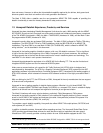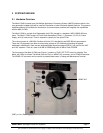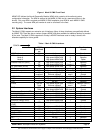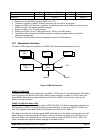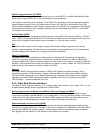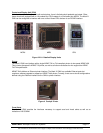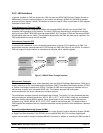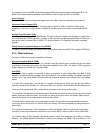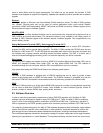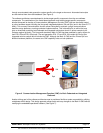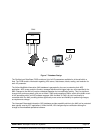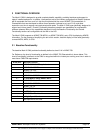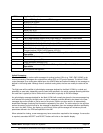
HONEYWELL Aerospace Electronic Systems Page 13
Use or disclosure of information on this page is subject to the restrictions on the title page of this document.
an extensive amount of ARINC 429 broadcast data providing aircraft performance related data. All of the
ARINC 429 broadcast data is available via the FIDB to be used by both the HGI and the AMI.
Cabin Terminal
The Mark III CMU can be configured to support up to two Cabin Terminals operating as end systems.
Electronic Library System (ELS)
Although there are no ELS systems in use today which interface to CMUs, the Mark III CMU can be
configured in the future to interface with a single ELS operating as an end system via high speed ARINC
429.
Cockpit Voice Recorder (CVR)
The industry is developing ARINC Specification 757 which defines a Cockpit Voice Recorder or Digital Data
and Voice Recorder (DDVR) capability. The Mark III CMU provides a single low speed ARINC 429 interface
that can be used to interface with an ARINC 757 compliant device. This capability will require a software
upgrade.
Global Positioning Satellite System Unit (GPSSU)
The Mark III CMU can accept high speed ARINC 429 broadcast data from ARINC 743 compliant GPSSU(s).
2.2.4 Other Interfaces
The Mark III CMU also supports the following interfaces:
Aircraft Personality Module (APM)
ARINC 607 defines the characteristics of an Aircraft Personality Module which contains aircraft and system
configuration information and makes this information available to the CMU. The Mark III CMU supports a
single interface to an ARINC 607 compliant APM.
Dual CMU
The Mark III CMU is capable of operating in either a standalone or dual configuration. The Mark III CMU
hardware includes interfaces to support dual CMU operation. The interface between the onside and offside
CMUs is via a high speed ARINC 429 cross-talk bus along with discretes that indicate active and standby
states.
In a dual CMU configuration, the left CMU is normally considered the Active unit and the right CMU is
normally considered the Standby unit. The Active CMU is the one that communicates with the subnetworks.
There are three possible dual CMU configurations; cold spare, warm spare, and hot spare.
The Cold Spare Configuration is the configuration in which the two CMUs on the aircraft do not communicate
datalink information with each other. In the event of a failure of the Active CMU, the Standby CMU must be
manually configured (via a cockpit switch) to be the Active CMU.
The Warm Spare Configuration is the configuration in which the two CMUs exchange datalink information.
In the event that a fault occurs in the Active CMU, the Standby CMU will automatically be configured as the
Active CMU.
The Hot Spare Configuration is the configuration in which the Standby CMU is monitoring all configuration
and traffic so that it can seamlessly assume the role of Active CMU in case of a failure of the Active CMU.
The baseline Mark III CMU supports cold spare operation. Other dual operations are waiting on industry
definition. The ARINC Datalink Subcomittee is planning on updating the ARINC 758 characteristic in the



